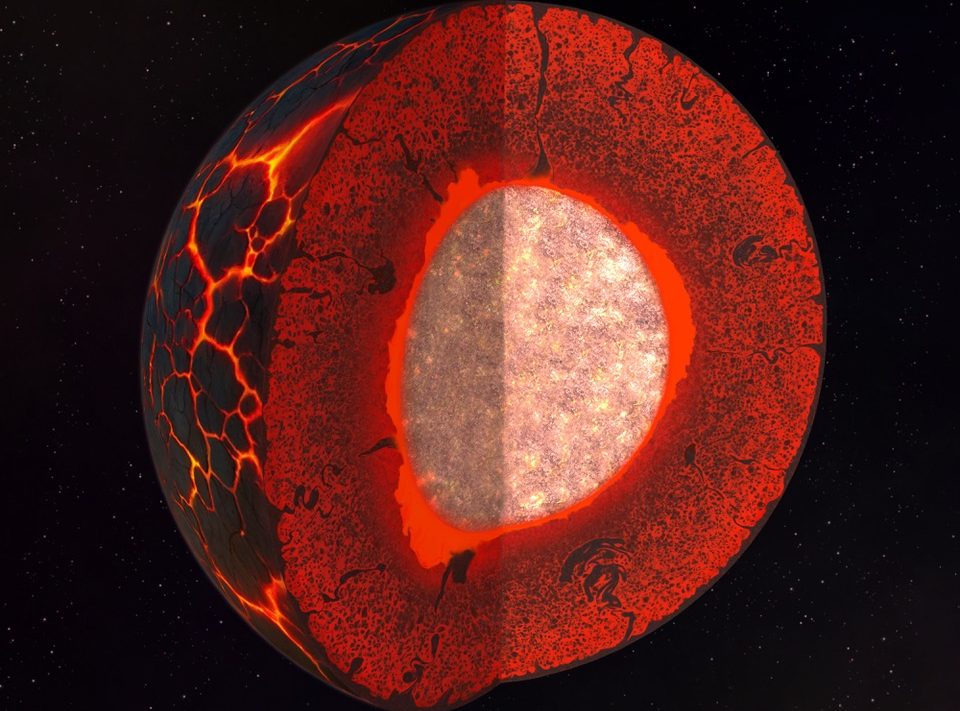Follow us on Google News (click on ☆)
Through advanced numerical modeling incorporating a multiphase fluid dynamics approach, a new study sheds light on the chemical and thermal differentiation processes that led to the formation of a basal magma ocean.

Solidification of a primitive terrestrial magma ocean gradually leading to the formation of a basal magma ocean.
@Nicolas Sarter
An international team of researchers from the Institut de physique du globe de Paris (CNRS / IPGP / Université Paris Cité) and York University has revisited the interpretation of geophysical structures rooted at the base of Earth's mantle. Their work challenges traditional models of Earth's primitive mantle solidification.
This study demonstrates that this question is secondary. The determining factor lies in gravitational segregation between dense, iron-rich liquids and lighter, iron-poor solids. This natural phenomenon led to the accumulation of iron oxide-rich liquids above Earth's core, giving rise to a basal magma ocean.
By integrating phase relations, melting diagrams, and the distribution of chemical elements during solidification, the numerical modeling used in this study enabled estimation of the composition and spatial distribution of primordial geochemical reservoirs. These findings directly correlate with isotopic anomalies observed in ancient rocks.
Major implications for Earth's geochemical history
The researchers also highlighted the formation of a significant quantity of solids at the surface rather than at depth. This observation suggests that geochemical signatures from surface silicate fractionation were injected into the deep mantle, challenging our understanding of interactions between Earth's mantle dynamics, petrology, and geochemistry during the first billion years of rocky planet evolution.
Furthermore, this work reveals that the formation of a basal magma ocean was inevitable on Earth, even under the most unfavorable conditions. Additionally, the geochemical imprint of this solidification on the solid mantle is much less pronounced than predicted by classical geochemical models, due to intense vertical mixing during solidification.
These discoveries pave the way for reevaluating geochemical and geophysical observations, enabling more precise reconstruction of Earth's thermal and chemical history since its formation. More broadly, they provide new insights into the diversity of rocky bodies in our solar system and beyond.